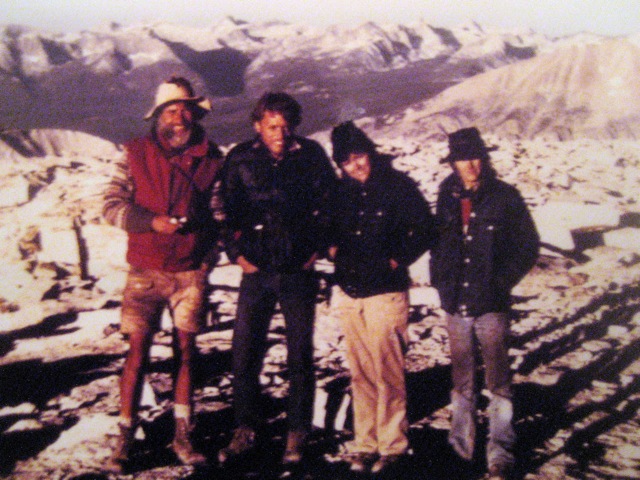My top personal goal for 2010 is simple: hike the entire John Muir Trail. The John Muir Trail (JMT) officially runs 216 miles from Yosemite to Mt. Whitney. You hike over 13 mountain passes, several over 13,000 ft. Most people take three weeks or more to hike the entire length, making this backpacking trip an epic adventure. And like most adventures, the JMT requires plenty of training and fitness.

I’ve hiked the JMT before, way back in 1980. I was 18 years old, and after running on the cross-country and track teams for four years of high school, I was in great shape. Thirty years later, my shape has changed, but the fire still burns. And that means that I need a training plan to make sure me and my companions are fit for the journey.
A good training plan will make sure that not only can I handily cover the average daily distance, but do so at altitude, with elevation gain, and day-after-day. There are three key components of this training plan:
- Distance – I need to be able to cover the distance, while carrying a fully-loaded backpack.
- Elevation – The average elevation gain will be 1,300 ft, but there will be two days with over 5,000 ft. of elevation gain. That’s a lot of climbing, and the training plan needs to prepare me for that.
- Durability – That’s how I describe the impact of long backpacking trips. Anyone can suffer for a 2-3 night trip, but how will your body respond to getting up and doing it again for 21 days in a row?
As a regularly hiker, I’m in decent shape already, but I live by the coast at sea level, so altitude will be a factor. On this trip, I’ll be hiking north-to-south. It’s the direction preferred by most JMT thru-hikers, because you start out at the lower elevations of Yosemite Valley and progressively work your way up as you make your way towards Mt. Whitney. This helps mediate some of the effects of altitude, but I will be doing some high-elevation trips beforehand to make sure the entire team performs well way up there.
The Plan Thus Far
- 2-3 conditioning hikes during the week, close to home. For this, I favor local hikes and routine, so I’m hiking the 6.5 mile Colinas Bluff trail and the 4.5 mile Roller Coaster Ridge trail, and occasionally mixing in a random local trail for variety. On some of these, I’ll carry a backpack weighted with water to simulate a full load.
- One longer weekend hike (~10 miles+). These
- Once a month, a “Hell Week” — 5-6 consecutive days of hiking to address the durability issues
- A few backpacking trips to test my equipment
This is covering the general fitness pretty well, but I need to know how my body will react at higher altitudes. Fortunately, there are some pretty good local trails with decent elevation gain. For example, the Holy Jim Trail to Santiago Peak — which I hiked in January — gains 4,000 feet. But the summit is still only 5,689′ — not enough to really test the lungs. To do that, I’ll drive about an hour away and hike some of the other local ranges.
Upcoming Training Hikes
Over the next three months, I’ll be tackling the Six-Pack of Peaks to help us condition for hiking at higher altitudes. In sequential order:
- Mount Wilson via Chantry Flats – 5,712 feet
- Cucamonga Peak – 8,859 feet
- Mount San Antonio (aka Mt. Baldy) – 10,064 feet
- San Bernardino Peak – 10,649 feet
- Mount San Jacinto – 10,834 feet (I’ll probably combine this with some backpacking)
- San Gorgonio Peak – 11,499 feet
The hikes above 10,000 feet will be scheduled for the end of May, June and early July to avoid snow. I’ll be posting some of these with the Hiking OC meetup if you’re interested in joining me.
In addition, I’m hiking the Cactus to Clouds in two weeks. It’s rated the 5th hardest day hike in the country by Backpacker magazine. It’s a slightly crazy 20 mile hike from Palm Springs to Mount San Jacinto with over 10,000′ of elevation gain.
Following this training plan I will be well-prepared for the JMT. Can’t hardly wait!



You must be logged in to post a comment.